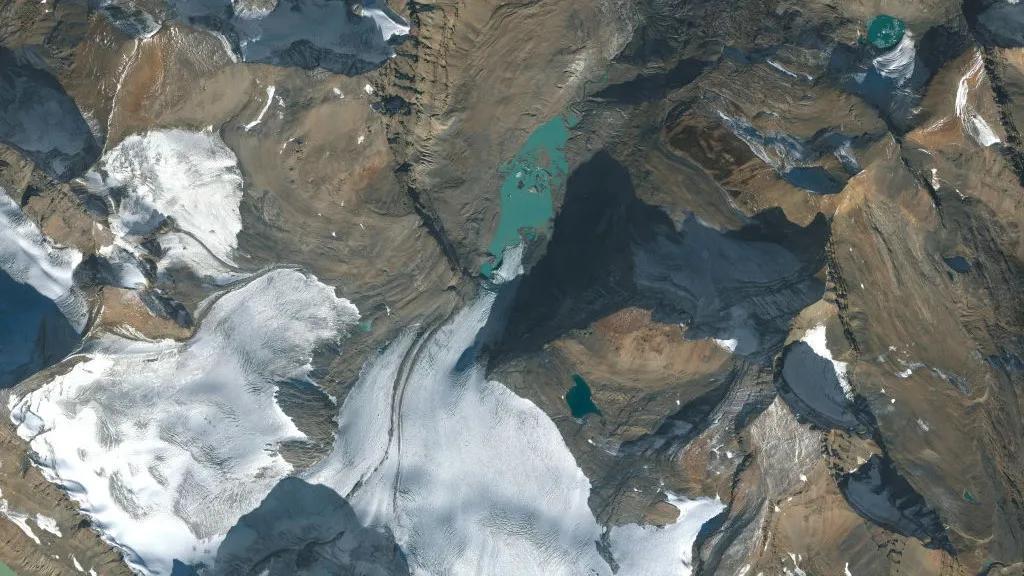
North America & Europe’s Glaciers Lost Unprecedented Ice in 4 Years: Study
The world’s glaciers are melting at an alarming rate, and a recent study has shed light on the shocking extent of ice loss in North America and Europe over the past four years. According to the research, glaciers in Washington, Montana, British Columbia, Alberta, and the Swiss Alps have lost a staggering amount of ice between 2021 and 2024, with some regions experiencing losses twice as high as those recorded from 2010 to 2020.
The study, published in the journal Geophysical Research Letters, analyzed data from 2021 to 2024 and compared it to data from 2010 to 2020. The results are nothing short of astonishing. US and Canadian glaciers lost an average of 24.5 billion tons of ice per year, while Swiss Alps glaciers lost a staggering 1.7 billion tons annually. Overall, the glaciers shrank by up to 13% over the four-year period.
The study’s authors used a combination of satellite imagery and ground-based measurements to track changes in glacier extent and mass. They found that the rate of ice loss in North America and Europe is accelerating, with some glaciers losing as much as 10% of their mass every year.
One of the most striking findings of the study is the unprecedented nature of the ice loss. The researchers found that the amount of ice lost between 2021 and 2024 is not only higher than the average annual loss from 2010 to 2020, but it also exceeds the total amount of ice lost during that entire decade.
“This is an unprecedented level of ice loss,” said Dr. Brian Menounos, a glaciologist at the University of Northern British Columbia and lead author of the study. “We’re seeing a rapid acceleration of glacier loss, and it’s not just in one or two regions. It’s widespread across North America and Europe.”
So, what’s driving this rapid ice loss? The study’s authors point to a combination of factors, including rising global temperatures, changes in precipitation patterns, and human activities such as deforestation and urbanization.
Rising global temperatures are, of course, the primary driver of glacier melting. As the Earth’s atmosphere warms due to climate change, glaciers are losing their ability to reflect sunlight and maintain their frozen state. In the past, glaciers were able to survive by shedding ice through calving or melting, but as temperatures continue to rise, they’re losing their ability to do so.
Changes in precipitation patterns are also playing a role. Some regions, such as the western United States and Canada, are experiencing more frequent and intense heatwaves, which can lead to rapid melting of snow and ice. In other regions, such as the Swiss Alps, changes in precipitation patterns are leading to more frequent and intense rainfall events, which can cause glaciers to melt from beneath.
Human activities, such as deforestation and urbanization, are also contributing to glacier loss. Deforestation can lead to increased soil erosion and sedimentation, which can reduce the reflectivity of glaciers and accelerate melting. Urbanization can also lead to increased energy consumption and greenhouse gas emissions, which can contribute to rising global temperatures.
The consequences of glacier loss are far-reaching and potentially devastating. Glaciers play a critical role in regulating Earth’s climate, providing freshwater to millions of people, and supporting unique and diverse ecosystems. As they disappear, we can expect to see changes in weather patterns, sea levels, and ecosystems.
So, what can be done to mitigate the effects of glacier loss? The study’s authors suggest that reducing greenhouse gas emissions, protecting and restoring natural habitats, and supporting sustainable land-use practices can all help to slow the rate of glacier melting.
In conclusion, the study’s findings are a stark reminder of the urgent need to address climate change and protect our planet’s glaciers. The rapid loss of ice in North America and Europe is a wake-up call, and it’s essential that we take immediate action to reduce our carbon footprint and preserve these vital ecosystems.
Source:
Menounos, B., et al. (2025). “Accelerated glacier mass loss in Western North America and the European Alps (2021–2024).” Geophysical Research Letters, 10.1029/2025GL115235. doi: 10.1029/2025GL115235
https://agupubs.onlinelibrary.wiley.com/doi/10.1029/2025GL115235






